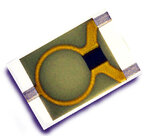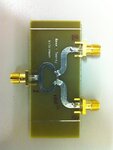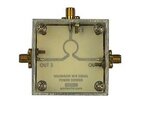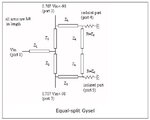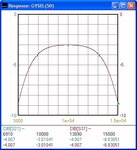luckyali
Member level 5
hi every one,
I have designed a power divider for 20 Ghz, simulated results were S12=S13=-3dB, but the tested measured result deviates heavily from simulated results. out put powers are S12= -4 db and S13 = -4.9 db.
the substrate i have used was roger Er=3.35 and SMA connectors are used.
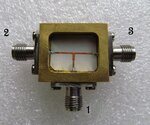
for the search of reason behind these losses. I read somewhere that it is preferable to use Alumina or any other material with higher Er e.g 9... so I have a very common question that what's the relation between dielectric constant of a material and operation frequency.
I have designed a power divider for 20 Ghz, simulated results were S12=S13=-3dB, but the tested measured result deviates heavily from simulated results. out put powers are S12= -4 db and S13 = -4.9 db.
the substrate i have used was roger Er=3.35 and SMA connectors are used.

for the search of reason behind these losses. I read somewhere that it is preferable to use Alumina or any other material with higher Er e.g 9... so I have a very common question that what's the relation between dielectric constant of a material and operation frequency.
Last edited:
